
“I went crazy,” Sherika Simms says quietly of the realization that she would be unable to help her brother.
Twenty-two-year-old Maurio Proctor, two years her junior but more like her twin – the boy that had followed her everywhere she went as a child and wanted to do everything she did – had been gunned down in front of her and all she could do was watch his killers drive away.
When the Impala had first rolled through Jordan Downs around 1 p.m. that afternoon, they hadn’t thought much about it.
“We were mourning the loss of someone we grew up with…” she tells me. “We’re not thinking we’re in harm’s way.”
That ”someone” was 25-year-old Branden “B.L.” Bullard – a major player in the East Side Grape Street Watts (Crip) gang based in Jordan Downs. Twelve hours earlier a shooter(s) – presumably from the rival East Coast Crips – had sprayed a party where people from several neighborhoods had gathered, wounding seven and killing Bullard.
He had been something of a larger-than-life figure for having survived a shot to the face 3 years prior in retaliation for the wounding of a Bounty Hunter (Bloods from Nickerson Gardens). That 2005 event sparked six weeks of tit-for-tat carnage that left nine dead, twenty-six wounded, and the whole of Watts paralyzed as the battle played out in the public space.
Although the incident that finally killed Bullard in the wee hours of Sunday, January 27, 2008, may have been sparked by a fight between women, the damage had been done. As dawn broke, warning shots were already being fired in areas frequented by Grape Street’s rivals.
Perhaps because Grape Street hadn’t landed a kill, the community did not expect a retaliatory attack.
Whatever the reason, when the Impala made a U-turn and came slowly back around, nobody bothered to look up, Sherika says.
Until all hell broke loose.
A shooter suddenly popped out of the car and fired 17 rounds at the three young men hanging out on her grandmother’s porch.
Sitting across the street in a parked car, she says, she did not fully grasp what was happening.
“Who are you all? Why are you all doing that to my brother?” she wondered, “I know he don’t know y’all. And I know he didn’t do nothing to you all.”
Only after the shooters finally moved off down the street, seemingly in no particular hurry, did it finally hit her.
“That’s when I looked over and…seen that they had killed my brother.”
I Say “Mass Killing,” You Say “Uptick in Violence”
When horrific massacres are inflicted upon places like Columbine, Virginia Tech, Aurora, or Sandy Hook Elementary, the nation mobilizes.
We offer support to survivors, laud “heroes,” erect memorials to those lost, and set up funds to ease families’ burdens. High-level political figures visit the sites, attend funerals, and cry with survivors. Celebrities tweet in solidarity. We pause to listen when survivors’ families demand we take gun control and health care for the mentally ill more seriously. Schools across the country adjust their safety policies and drill staff in anticipation of copy-cat incidents. Professional health pundits advise us on how to talk to children about violence and how to recognize signs of post-traumatic stress.
Random acts of violence in the public space, they reassure us, are the exception, not the norm.
They should try telling that to youth in chronically troubled neighborhoods.
“Have you noticed that within a couple months there’s been a lot of people dying?” 19-year-old Shakhyia Davis asked when we first sat down to chat on a beautiful sunny morning in Watts in late June.
Ticking off names on her fingers, she matter-of-factly listed three friends who were killed in May, a boy that had been shot the week prior, and her cousin’s boyfriend, who been killed while walking home from her aunt’s house the day before.
“He got about four blocks before they got him,” she said, shaking her head.
Two months later, I was going back over my notes from that interview when she texted me to say that, in one deadly day, she had lost three friends (including one of her closest friends) in two separate incidents. One happened around the corner from her apartment at ten in the morning.
“This world is crazy,” she wrote.
“Jeezus,” I replied. “It never ends.”
“No,” she agreed. “It don’t.”

It really doesn’t.
Like so many I’ve interviewed, she has been losing people around her to random acts of violence for years.
All she remembers about her step-father’s murder is that somebody they hadn’t seen in several years came by to pick him up to make a 7-11 run one night. Unknown assailants, perhaps aiming for her step-dad’s acquaintance, shot up the car. He never made it back home. She was ten years old.
Two years later, her fourteen year-old brother was killed down the street from her home.
Shakhyia says she still feels partially responsible for her brother’s death, even seven years on.
“Before he left [that day], my mom told me to tell him to be home by six. But, I didn’t feel like goin’ to tell him.”
She pauses.
“Maybe if I had told him to come home earlier, he maybe would’ve still been here.”
Instead, they heard shots ring out around 7 p.m. that night.
Gang bangers from the area had been trying to recruit her brother for years, catching him on his way to and from school or friends’ homes and beating him up “just because he didn’t want to be ‘from’ that ‘hood,” she tells me, disgusted. This time, she thinks, they must have decided they had had enough and shot him. Worse still, they continued to disrespect him after he died, kicking over the teddy bears and candles placed on the corner to memorialize him.
“He was only 14,” she says.
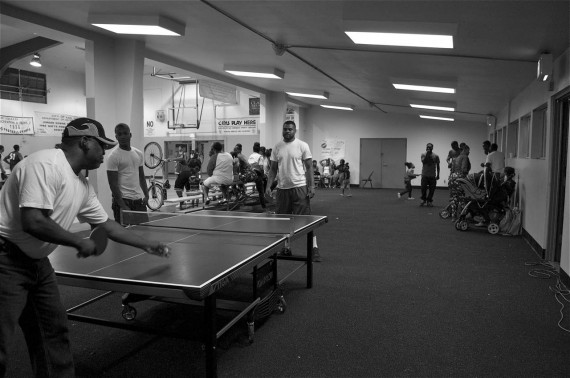
The public space, in other words, can sometimes be full of uncertainty and a very violent place, particularly for young men of color.
And, while the casualties of what some mental health experts term “community violence”* -- pervasive levels of a variety of forms violence that are experienced directly, witnessed, and/or experienced vicariously -- may be spread out over days or weeks and span several neighborhoods, they are no less devastating to families and communities than one-off school shootings in suburbia.
On the contrary, entire communities might be held hostage while the youth settle their scores.
Time once spent sitting on the porch socializing is now spent inside, isolated, staring at the door. As a retaliatory attack can come at any time, everyone has to be on guard. Particularly if those seeking vengeance are willing to settle for the next best thing when their intended targets are unavailable or a major figure like Bullard is killed and putting down arms too soon would be seen as a sign of disrespect. Six weeks after Bullard’s death for example, his brother, Kejuan, was “caught slippin’” by one gang while out to dinner with his brother and friends, miles from his home turf, and his mother’s home was shot up by another rival set, with bullets grazing a surviving sibling. Meanwhile, the Grapes targeted rivals’ neighborhoods, netting at least two kills, including one of a non-gang member who had been sitting on his bike, just talking to a friend, and wounding another six in the immediate aftermath.
These traumas are compounded by the fact that, in communities already troubled by issues of substance abuse, domestic violence, crime, a poor relationship with law enforcement, and lack of opportunity, area schools, parks, and even home environments don’t always provide safe havens. Those experiencing symptoms of post-traumatic stress may have few places they can retreat to in order to find shelter, nurse their emotional wounds, mourn in peace, or even seek counseling.
Considering that as many as 300,000 children in L.A. reside within neighborhoods where they are likely to be regularly exposed to multiple forms of violence, it is stunning that community violence tends to get little sustained attention. Especially because exposure to violence and violent environments can impair brain development in children (impeding learning, memory, concentration, and the regulation of behavior and emotions), meaning those affected may struggle to become functional adolescents and adults. As many as 25-30% of them are likely to suffer from post-traumatic stress disorder, while others will battle clinical depression or chronic stress. The potential for the manifestation of these disorders in attachment issues, poor coping skills, self-harm, suicidal thoughts, self-medication, anger, anxiety, inability to deal with stress, hypervigilance, susceptibility to trauma triggers, and violent outbursts in some form or another of such a large percentage of the population in troubled neighborhoods goes a long way to explaining how and why cycles of violence in such communities are so hard to break.
Yet, the tendency is to limit questions about mental and emotional health to the one-off incidents and normalize the chronic nature of community violence with innocuous labels suggesting the problem is manageable and self-contained. Ongoing violence is a “low-grade fever;” a string of related homicides might be a “spasm” of or “uptick” in violence; an unrelated series of incidents might be a “streak of chaos” or a “wave of mayhem.”
In place of public debates about the root causes of violence, authorities may only scratch their heads in wonder, as Sgt. Rich Pena of the L.A. County Sheriff's Department did recently when trying to assess what was behind events that, over the weekend of September 20th, left a trail of 10 dead across L.A. County (including 3 from police-involved shootings) and at least 10 injured.
"I was thinking, 'For gosh sakes, what's going on here?” he told the L.A. Times’ Hector Becerra. “’Is it the last night of summer or what?'"
“Authorities sometimes see a spike in crime when the weather's hot and more people are outdoors,” Becerra offered as a way to explain why law enforcement was at such “a loss” for answers, “but the weekend was relatively cool.”
That’s right.
At least 20 people were shot or stabbed within a 50 - 60 hour window of time and the most we could muster up in the way of interest was a question about the weather.
Although it is true that violence has been known to spike with summer heat, high temperatures are not the reason people are armed or cultivating beefs in the first place.
Happy people don’t go around shooting each other, I recalled a South L.A. teen at the mayor’s “Youth-Led Town Hall” on gun violence declaring to the crowd earlier this summer, throwing his arms open wide in a this-should-more-than-obvious gesture, and pausing for effect.
So, why was it that nobody seemed interested in taking the time to ask why the youth were so angry?
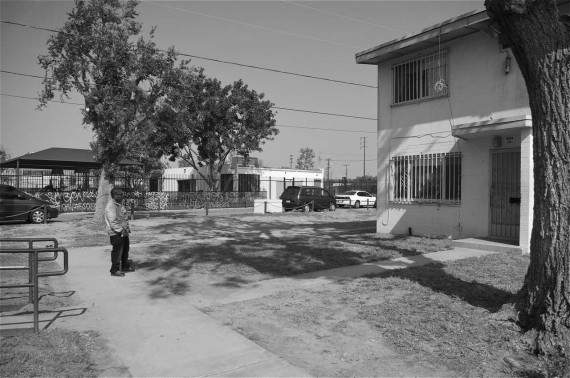
"Even the Good Ones Can’t Be Trusted"
Why don't we ask why the youth are so troubled?
That’s easy.
Two words: “gang-related.”
That’s a phrase, I guess, if you want to get technical.
There are other phrases that trigger disinterest, too – walk-up, drive-by, tit-for-tat, or turf battle, to name a few – but they all serve the same function.
When presented (or understood) as the root causes of violent behavior rather than as the symptoms of the deeper social ills they represent, the labels imply the victim was complicit in his own demise. They also implicate friends, family, and communities as being partially to blame for the violent state of affairs.
As such, the public is not only absolved of having to know details or lament lives lost, regular folks and Internet trolls alike feel licensed to vilify victims, reject parents’ claims that their sons were good kids (see here, for ex.), or even express relief that the youth are saving us resources by killing each other off.
The narrative the term invokes is so dehumanizing, in fact, that of the hundreds of young men shot to death in South L.A. the year that Proctor and Bullard died, only one name would pierce the consciousness of the wider public: Jamiel Shaw.
The much-beloved 17-year-old was gunned down in Arlington Heights by an 18th St. gang member named Pedro Espinoza who had been released from prison the day before.
The perfect storm of the apparent senselessness of the killing (said to be over race and the red color of his backpack), a mother serving in Iraq while her son died in front of his own home, and an armed undocumented immigrant and known gang member with a criminal past made for compelling television. The story even captured the imagination of right-wing conservatives like Bill O’Reilly and Michelle Malkin, with Malkin writing of her outrage at the “targeting of innocent black residents of Los Angeles by illegal alien gangs.” They eagerly threw their support behind Jamiel’s Law – a (failed) voter initiative that would have allowed law enforcement to track down and arrest undocumented gang members for being in the country illegally.
Many abruptly changed their tone when Shaw’s affiliation with a set of the Rollin’ 20s (Bloods) came to light a few months later.
The L.A. Times noted the “troubling details” of his possible gang connections painted a “different portrait” of Shaw than that of “the innocent high school athlete” whose story everyone had been so touched by. These disclosures, they suggested, might make him a “less than ideal poster boy” for Jamiel’s Law.
The LA Weekly bluntly asked if “a movement to protect kids should be named after an alleged gang-banger” and tastelessly paired the piece with a drawing of a young black everyman in football gear spelling out “blood” with his hands.
We knew it, everyone seemed to be eager to say. Even the good ones can’t be trusted.
The great shame is that, like many youth affiliated with gangs, Shaw had probably been a very good kid. Nothing in his history suggests that he was a hard-core gang-banger.
It’s a distinction that matters, writes gang researcher Alex Alonso.
He suggests that only about 10% of L.A.'s gang members (now numbering about 70,000, county-wide) “are the habitual repeat violent offenders responsible for approximately 90% of all gang-related crime. The rest of these ‘gang members’ are close friends, associates, peripheral players, relatives, school friends, ‘wanna-be’s, and community residents.”
It’s a distinction Sherika makes, too, for more personal reasons.
“My definition of a gang-banger,” she explains, “is someone out there killing people and robbing people for what you call yourself being from [in the name of your ‘hood].”
Not someone like her big-hearted brother who, although known within Grape St. as “Gus Loc,” had also loved school, his children, his family, and, she believes, never wanted to hurt anyone.
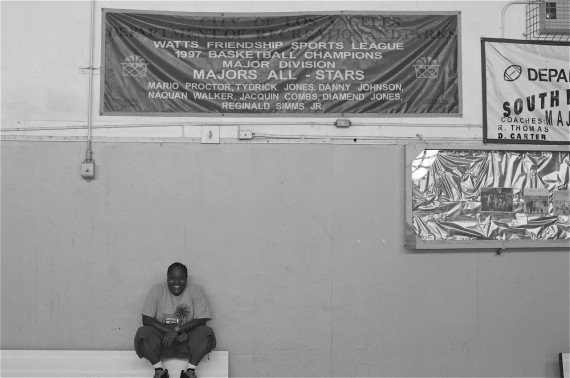
But, “growing up around [Jordan Downs]…you’re automatically stereotyped as a gang member. It can just be the street you live on…” she says. “If anything, all of us is ‘affiliated’ because we all know a gang member...That makes us affiliated in the law’s eyes.”
The understanding that they are seen this way feeds a sense of isolation in local youth, many of whom are convinced that the world has written them off before they’ve even fully emerged from puberty.
“They think we’re all thugs,” “They think we’re worthless,” “They don’t give a shit about us,” or “Nobody cares if we live or die down here,” are some of the more common refrains I hear.
Surrounded by trauma, sure nothing is going to change, and convinced nobody gives a damn, it shouldn’t be all that surprising that youth feel they have to find ways to fend for themselves.
Help, they have learned, is definitely not on the way.
"How Come This Keeps Happening in the Community Where I Live At?"
When I first sat down with Sherika back in July, it was during Summer Night Lights at Jordan Downs, where she worked as a supervisor. On folding chairs and hemmed in by chaos and constant interruptions as music blared and kids ran back and forth between the gym and the playground, she had told me she had recently gone to see Fruitvale Station, the film about the life and death of Oscar Grant, a young black man shot to death by BART police officer Johannes Mehserle.

I wondered if I had misheard her.
Why on earth would she subject herself to that?
It was all about testing herself, she had explained at the time, to see how far she had come in her healing process.
Now, alone in the quiet gym a few weeks later, I ask her to elaborate on her reasoning.
“It was time for me to face something similar to my situation,” she says, simply. Because Fruitvale was based on a true story and used real footage of the incident, “I knew how it was going to make me feel.”
It still knocked the wind out of her.
“From watching it, I see that I’m not as strong as I thought I was,” she explains. “It made me relive the day that my brother was taken away. Just to see [Grant] get shot, to hear the background noise and everybody going crazy…It triggered everything.”
The shock coursed so intensely through her body, she says, she couldn’t even speak. She was back in that moment, experiencing every agonizing second of it: the eternal wait for the ambulance, the overwhelming helplessness, and even her meltdown when the police finally felt it was safe enough to let the EMTs through the crowd that had gathered.
“I didn’t want them to touch him,” she says. “I was like, ‘What are you touching him for? You can’t help him. I couldn’t help him. So how you gonna be able to help him?’”
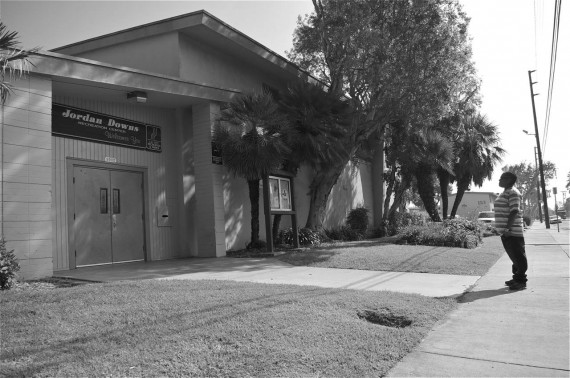
Stuck on the thought that forcing yourself to watch a film like Fruitvale was a particularly masochistic way to face your fears, I return to questions of how and when she sought out help for post-traumatic stress.
Most of those I’ve interviewed have never done so or even considered it an option. Like many of their peers, they have almost normalized what they are going through, assuming everyone else is experiencing similar things, that others have it worse, or that it isn’t affecting them. Some even get competitive, pointing to others around them and saying those people haven’t seen half of what they had. For them, at least appearing to bear suffering without stopping to take a breath is almost a point of pride.
Given how openly Sherika had spoken about her healing process, I had naively assumed she’d sought out help right away.
“Three years?” I am incredulous when she tells me it took much longer for her to reach out.
“But, when did you realize that you were having a really hard time dealing [with his death]?”
“That same day that it happened,” she answers simply. “I knew that it destroyed me that same day. There wasn’t a day that we wasn’t around each other. In that moment, in that time, I wasn’t able to help him, so that made me feel guilty.”
So guilty that she had begun to question her own existence.
As his big sister, she felt she had had a duty to protect him and keep him safe. And she had failed.
Bitter and depressed, she felt she couldn’t afford to trust people anymore. “I just lost all hope, basically. I gave up on life and everything else. I didn’t want to do nothing. I didn’t celebrate nothing. I just completely stopped everything… [It’s like,] ‘He’s not here no more, so why am I doin’ it?’”
“I just didn’t care no more…” she shrugs, “I stopped loving myself and others…it was just like I d[id]n’t give a fuck.”
Her voice is flat as she relays all this to me; her face, expressionless.
Christ, I think, taking stock of the empty gym from the stage where we sit, chatting.
My eyes come to rest on the royal purple banner bearing her brother’s name that hangs prominently on the wall of the otherwise drab basketball court. He had been part of the 1997 championship team in the Watts Friendship League. They had grown up in that gym because their parents worked there. It was where she says they had learned positive lessons about teamwork and leadership.
Three years.
“That’s a lot of pain to carry,” I finally manage.
She agrees, but has a ready explanation for why she and others like her are so reluctant to get help
“As a kid, that’s all you hear and see: the police…gunshots…the fast life.”
And, when you’re constantly bombarded with tragedy after tragedy, she explains, it changes you.
“It’s very depressing. It makes you not trust. You have that ‘I don’t care’ demeanor at all times. It’s frustrating… ‘How come this keeps happening to me?’ Or, ‘How come this keeps happening in the community where I live at?’ So, that takes a lot out of you already. By constantly seeing negative things and nothing positive, you gonna always think negative. When there’s nothing positive that I’m seeing in my face when I’m outside, [and the] only positive I’m seeing is when I’m inside [my home]…? Trying to balance that is a lot.”
Finally, she just decided she needed to start over. She wanted people to see her as a good person instead of a product of what she had endured. And, as the oldest child, she felt responsible for setting both a good example for her siblings and her brother’s surviving children.
“I knew I had turned into a person that I wasn’t,” she says. “It was just time. I needed to be who Sherika was before that tragedy happened. So, that was my goal.”
It was hard to dig herself out of that hole, she says, but it had to happen.
“If I didn’t change, I would’ve been ruined and I wouldn’t like people.”
“And, I love people.”
“You Got to Listen”
“Knock knock,” Sherika calls out.
It is now October, and we are standing on the front step of the apartment on 101st St. where her brother was killed five years ago.
“You don’t speak Spanish?” asks the woman who answers in heavily accented English, looking slightly wary.
“Tell her my story!” Sherika says when I indicate that I do.
As I explain who we are and why we are documenting her family’s story, Sherika holds up the framed portrait of Maurio – a photo taken just hours before he was killed – to help convince the woman we are sincere.
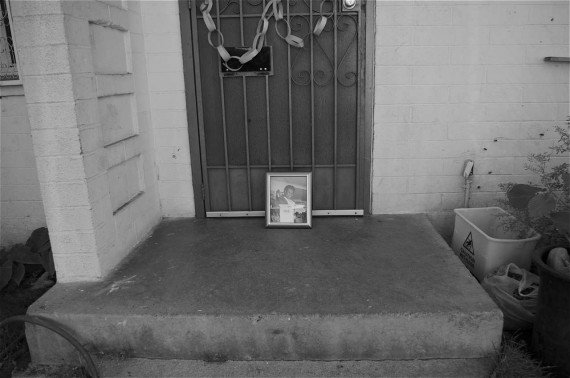
Would you mind if we photographed the exterior of the apartment? This is where her brother was shot to death in 2008.
The woman is utterly nonplussed and tells us that will be no problem before shooing her children back into the living room and shutting the door.
Later, as we stand across the street at the location where Sherika had been parked that day, I tell her I don’t think the woman had any idea that someone had been killed on her doorstep.
She nods then points to the intersection of 101st and Grape.
My eyes follow her hand as she retraces the shooters’ path for me, past our location to the end of the street and back to the place where they pulled up to do their damage – right alongside the parked car she had been sitting in.
The wide street is practically barren – there are few trees or other obstructions, no place to hide in the middle of the day.
I can practically see it unfolding and the coldness of it makes me shudder.
“Goddamn, that’s bold,” I mutter.
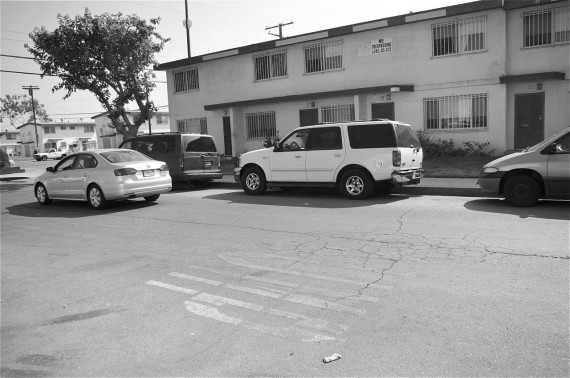
As we walk back through the development to the rec center, I tell her about a conversation I had with Branden Bullard’s younger brother, Pat Wooten, back in July.
We had stood out in front of the rec center on a still evening and he had talked about being ready to go back to school. A talented football player, he had managed to get himself out of Watts and onto a college team in New Mexico. He seemed nervous to be back home.
It was so peaceful in New Mexico, he told me.
Nobody cared about where he was from or what colors he was wearing or knew what he’d been through. He didn’t have to be on guard all the time. He could breathe and just be himself.
“Just peaceful.”
Sherika nods in understanding.
It has been anything but peaceful in Jordan Downs of late. While the latest incarnation of the battle currently underway (begun earlier this summer, in August) has not been as bloody as it would likely have been in years past, it doesn’t mean things are quiet. The young men have largely disappeared from the streets there, and it isn’t unusual to hear shots fired overnight or see suspicious cars possibly making dry runs. One friend even reported being awoken by some of Grape Street’s rivals who decided to send a spray of bullets into the air as they charged across the lawn of his family’s apartment at one in the morning just a few weeks ago.
The tension is so high that, just last week, a fight broke out after pre-teens from Jordan Downs went over to the 109th St. rec center (located in rival territory) to play a friendly football game. The younger kids from both sides had played together just fine. But, a few of the older folks there started getting into it and the night ended with the coach throwing himself in front of his young players like a human shield.
No shots were fired, but it could have ended very badly.
Two of the kids that had been at that game are hanging around the rec center when Sherika and I walk in.
They are so tiny – just babies, really – big-eyed and seemingly propping each other up with their skinny shoulders.
Had this happened in a more upscale neighborhood, news crews and multiple police vehicles would likely have descended upon the scene, outraged that young children might have been in the line of fire.
Here the community had had to handle it themselves - to find yet another way to adapt while still serving the kids they're working so hard to lift up.
"It shouldn’t be that way...," I start to say about the injustice of it all.
“Stop right there,” she says, holding out her hand. “That’s exactly what the coach said – what you said right there.”
But he should have known better, she insists, because this happened last year, too.

“You got to listen when they tell you not to come back…that you’re not wanted here.”
She shakes her head emphatically.
“You got to listen.”
She’s right, of course.
But it shouldn’t be that way.
Sahra Sulaiman produced this story while participating in The California Endowment Health Journalism Fellowship, a program of USC's Annenberg School of Journalism. Related stories can be found here.
# # # #
*"Community violence" is a highly imperfect term, in that it describes what communities are experiencing without engaging the forms of structural violence that gave rise these conditions. Still, it can be useful to understand that community-wide struggles with trauma (including the witnessing of violence) because, according to a study conducted as part of the Defending Childhood Initiative, it "can prevent children from feeling safe in their own schools and neighborhoods...[and] lead children to adopt an attitude of hypervigilance, to become experts at detecting threat or perceived threat — never able to let down their guard in order to be ready for the next outbreak of violence. They may come to believe that violence is 'normal,' that violence is 'here to stay,' and that relationships are too fragile to trust because one never knows when violence will take the life of a friend or loved one. They may turn to gangs or criminal activities to prevent others from viewing them as weak and to counteract feelings of despair and powerlessness, perpetuating the cycle of violence and increasing their risk of incarceration. They are also at risk for becoming victims of intimate partner violence in adolescence and in adulthood."






